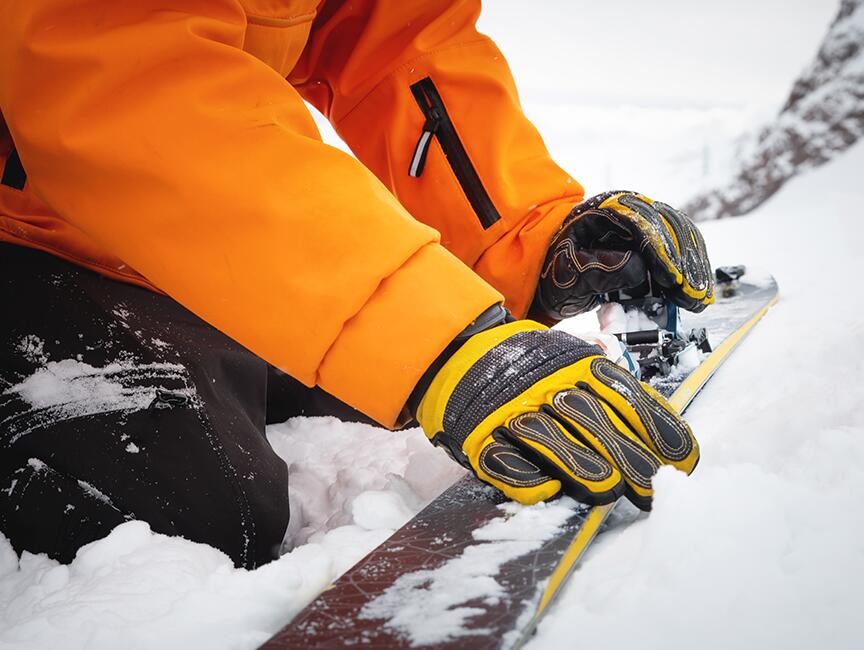 In recent years, heated gloves have gained increasing popularity as a solution for keeping hands warm in cold weather or during outdoor activities. As interest in these gloves grows, so do the questions we have about them.
In recent years, heated gloves have gained increasing popularity as a solution for keeping hands warm in cold weather or during outdoor activities. As interest in these gloves grows, so do the questions we have about them.
In this comprehensive guide to heated gloves, we will delve into various aspects of heated gloves and provide answers to common questions.
Understanding the Technology Behind Heated Gloves
Heated gloves use advanced technology designed to keep hands warm. Typically, heated gloves have built-in electric heating elements and power sources to generate heat. The heating elements, which are the core of the gloves, ensure even distribution of warmth. Additionally, heated gloves come with adjustable heat settings, allowing users to set the temperature to their preference.
Common Types of Heating Elements
Resistive Heating Wires:
These generate heat through the resistance effect when an electric current passes through wires made of materials like nickel-chromium alloy.
Carbon Fiber Heating Wires:
Carbon fiber materials, known for their flexibility and conductivity, evenly distribute and conduct heat.
Metal Film Heating Plates:
These use the conductivity of metals to generate and transfer heat to the gloves.
Advantages of Heated Gloves
One of the primary advantages of heated gloves is the immediate warmth they provide to hands. Whether you’re skiing on snowy mountains or pruning flowers on a cold morning, the gloves keep your hands comfortably warm. This is particularly beneficial for people with poor blood circulation or other conditions causing discomfort, as they can adjust the temperature and power settings for personalized warmth.
Additionally, heated gloves often come with extra features like touchscreen compatibility, enabling the use of smartphones and tablets without removing the gloves. They also offer windproof and moisture-resistant capabilities, making them suitable for various outdoor activities.
Potential Risks of Heated Gloves
Despite their benefits, heated gloves do come with risks. The most concerning is the risk of burns. Like any heating device, prolonged exposure to high temperatures or excessively hot gloves can lead to skin burns.
Another significant risk is electrical issues, as heated gloves contain built-in heating elements and batteries, which can potentially malfunction or short-circuit.
How to Mitigate These Risks?
- Regularly inspect the gloves.
- Follow the manufacturer’s instructions carefully.
- Replace damaged gloves promptly.
How Do Heated Gloves Work?
Heated gloves operate differently based on their functionality. Some use batteries to power the heating elements, while others require electrical connections.
Each method has its advantages: battery-powered gloves provide warmth without needing an external power source, while electrically heated gloves rely on a continuous power supply from a socket or other electrical systems.
Different gloves may have varying heating capacities and technologies, so it’s essential to read the product specifications and manufacturer’s guidelines before use.
How to Choose the Right-Heated Gloves?
To choose the right heated gloves, consider several factors to ensure safety and optimal performance. First, selecting gloves that fit your hands properly is crucial, as ill-fitting gloves can cause discomfort. Check the size charts provided by manufacturers to find the best fit.
Secondly, evaluate the heating capacity and battery life of the gloves to ensure they can provide long-lasting warmth without frequent recharging or battery replacement.
Are Heated Gloves Suitable for Outdoor Activities?
Heated gloves are excellent for outdoor activities, especially in cold or extreme conditions. They are popular among outdoor enthusiasts, such as snow sports fans, hikers, and mountaineers.
Compared to traditional bulky gloves, heated gloves offer warmth while providing better flexibility and grip, allowing users to perform activities more freely.
However, it’s important to note that not all heated gloves are suitable for every outdoor activity, particularly those requiring prolonged exposure to severe cold or high-altitude environments.
Long-term Effects of Using Heated Gloves?
Moderate use of heated gloves following safety guidelines typically doesn’t cause long-term health issues. However, improper or prolonged use can lead to potential risks such as dry skin, dehydration, or irritation. It might even result in dermatitis or eczema. Therefore, it’s essential to allow your hands to breathe and stay moisturized during use.
Are Heated Gloves Waterproof?
Heated gloves vary in their waterproof capabilities. When choosing heated gloves, consider whether you need them to be waterproof, especially if you’ll be using them in wet conditions. Opting for waterproof heated gloves can prevent water from damaging the heating elements and ensure the gloves’ longevity.
Tips for Using Heated Gloves
To ensure your safety and maximize the gloves’ benefits, first carefully read and understand the manufacturer’s user manual or instructions. Follow the guidelines precisely for proper operation.
Additionally, unless you have the necessary expertise, avoid modifying or repairing heated gloves yourself. If the gloves are damaged or have issues, contact the supplier promptly.
Conclusion
With the above information, you should now have a good understanding of heated gloves. If you’re interested in them or considering a purchase, please contact us for more information. We are here to answer any questions you may have about these gloves.
How to Measure Glove Sizes – Source: AIBON
Latex gloves– Source: AIBON
Safety gloves– Source: AIBON
Working gloves– Source: AIBON

